Last Updated on June 1, 2022
As a beginner sewing machine user, you’d be hard-pressed not to come across the straight stitch sewing machine. It is usually the first machine that all beginners must get acquainted with before learning other machines like Sergers and Overlockers.
Understanding what this type of sewing machine does will help you decide if it is what you need or more suitable alternatives out there for your needs.
In this article, we will help you understand what a straight stitch sewing machine is and its advantages. We’ll also discuss its features in detail so that you can pick one out when shopping around.
What is a Straight Stitch Sewing Machine?
As the name implies, straight stitch sewing machines are a group of machines that have a continuous stitching action without any bending or folding involved. It has a needle that penetrates the fabric vertically downwards to achieve this effect.
These kinds of sewing machines can only sew simple stitches like straight lines and zigzag stitches.
These sewing machines are ideal for beginners because they’re easy to use and less expensive compared to other types of sewing machines available on the market today.
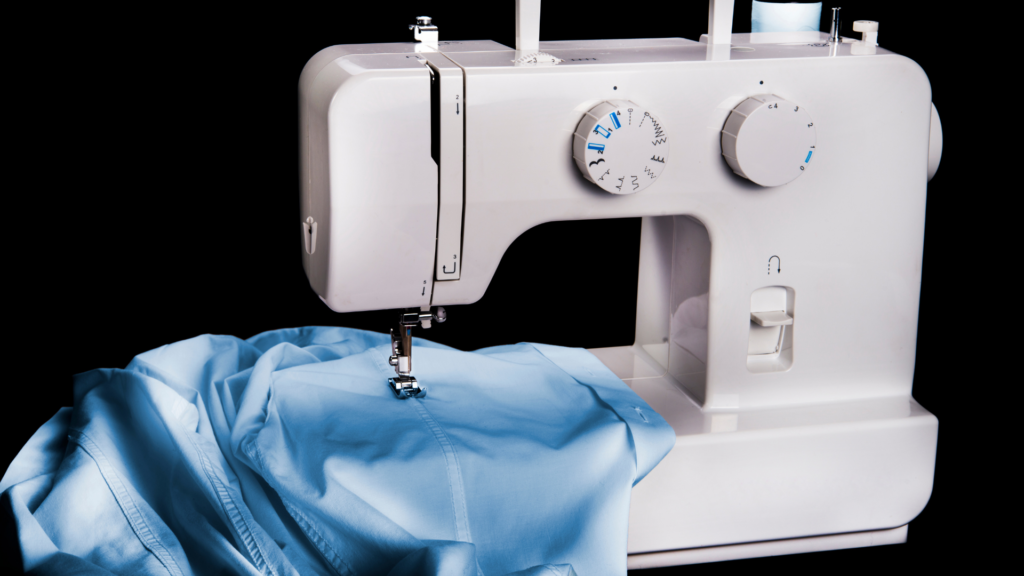
12 Things Every Beginner Should Know About Straight Stitch Sewing Machine
1. Clean Your Machine Regularly
Never forget to clean your machine regularly, especially if you do a sewing activity every day. Cleaning will be a lot easier if you have all the accessories that come with your machine because you don’t have to pop out that bobbin case just to clean it.
2. Get The Right Needle
Having the correct needle is one factor in determining how good your stitches are, so always check what kind of needle matches your material before you start sewing.
3. Use Thread That Matches Your Fabric
A common mistake from novice sewers is using the wrong thread, not balancing tension, and using the wrong needle size. You can say goodbye to those mistakes once you know what thread matches for which fabric and take note of the instruction on adjusting tension correctly.
4. Adjust The Tension Correctly
People who have a low quality sewing machine usually complain about skipped stitches and breakage. You don’t want to end up with a bunch of scrapes on your outfit because you make the tension uneven, so always check if it needs adjustment.
5. Use A Mini Iron
Some fabrics are difficult to press or need special treatment before sewing them together. That’s where mini iron comes in handy as it can help press those tricky areas quickly.
6. Try Out New Stitches
Not every stitching technique only has one stitch pattern. Frequently you will find new ones from different brands or models, so try out a few until you get the desired result.
7. A Little Fray Check
You don’t want your clothes to get ruined by tiny fray hairs that come out of the seams, so make sure you always apply a fray check stick after sewing together.
8. Learn How To Remove Stitches
Sometimes, stitches are left on your outfit even though you did everything correctly. In this case, it is time for some needlework and removes them.
9. Pressing Is Necessary
Pressing is vital because it makes the fabrics easier to sew together, giving better results when done right.
10. Sew With The Right Needle Size
Different fabrics have different thicknesses, which means they need particular-sized needles for seam ripping. Otherwise, you can damage the fabric while trying to sew it.
11. Use The Appropriate Thread
Different fabrics require different thread types, so make sure to check before buying one. Generally, there are four main types of sewing thread used for stitching purposes: polyester, cotton, linen, or silk thread. All have their own advantages and disadvantages.
For example, suppose you are using silk fabric. In that case, it is better to use a natural fiber because it will prevent the smoothness of your work from becoming uneven in some spots due to its sticking properties on the fabric’s surface.
12. Carefully Cut Thread After Stitching
Whenever you finish stitching, make sure you cut away any remaining loose pieces of thread because they can come out at any moment and cause problems later on during the process, especially when ironing it.
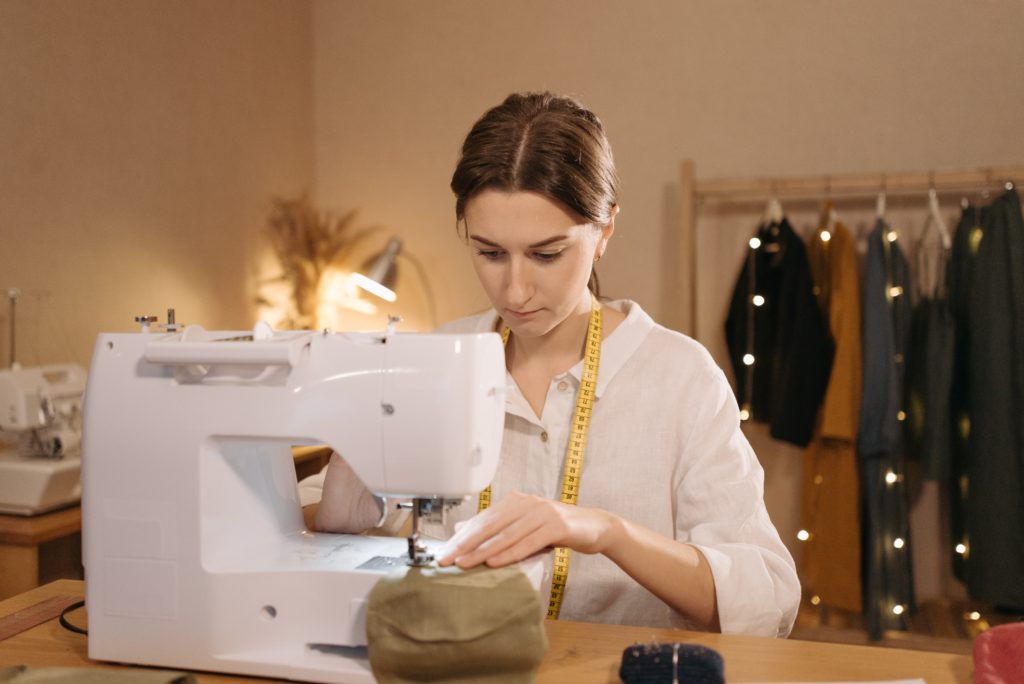
Benefits of Using a Straight Sewing Machine
This sewing machine is built explicitly for straight stitch purposes. Its throat size is relatively small, but that should not become a problem because it still can take more significant fabric pieces than any other family machine out there.
They also come in lower price points which makes it great if you’re on a budget but still want to try sewing. If you are starting out then, this is the best sewing machine to buy. You can start with something fundamental, and it doesn’t cost too much.
Here are a few advantages of using a straight-stitch sewing machine.
- You can easily sew a dress with a fit and flare in it.
- It goes in a straight line, so you don’t have to worry about the needle going across seams. It will not break your threads or cause any damage to your fabric.
- You can easily sew hems of various widths with this straight stitch sewing machine without any hassle.
- You can quickly sew quilting seams, hems, or any garment with an all-over stretch.
- This kind of sewing machine has a stronger motor than other machines so that the stitching will be faster and sturdier.
The only downside of a straight-stitch sewing machine is that it has a shorter arm space which can be annoying if you are not used to it.
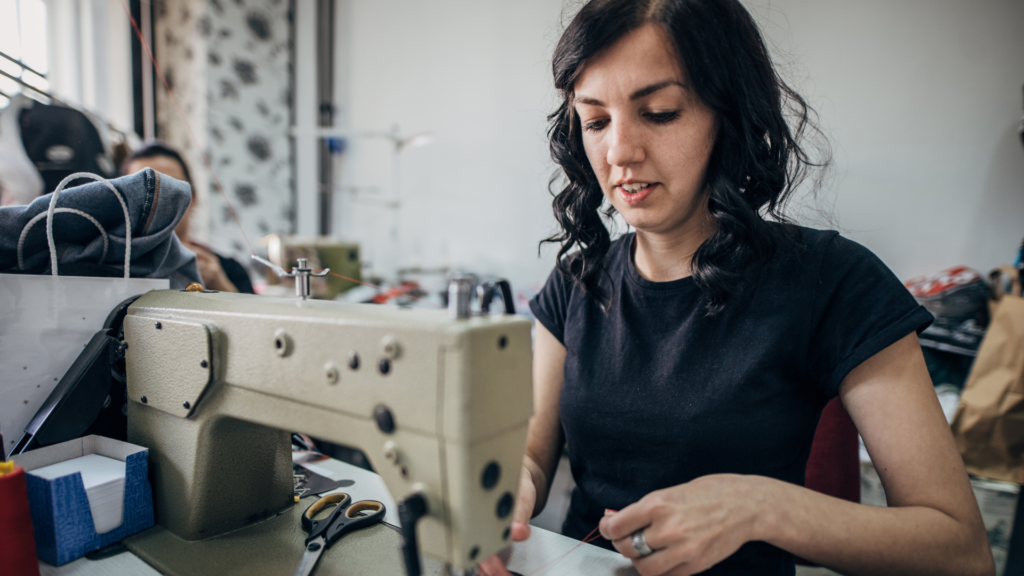
9 Tips to Stitch Straight
Straight stitching is a basic sewing skill. Like all skills, you need to practice, and there are a few tips that will help you achieve straight stitches.
- Use a good-quality needle for your type of fabric. A universal needle is the best option as it can be used on different kinds of materials, from silk to denim, without any problem.
- Make sure your needle is tight and well-threaded.
- Hold the fabric taut against the foot as you sew. This will help you achieve a lovely straight stitch. The lower the pressure on the presser foot (more relaxed), the more refined you can stitch.
- Keep your hands steady, and don’t move them too much when sewing. If you use your left hand to steer the fabric, make sure it is comfortable, not too tight, or too loose.
- Some people like to use pins when sewing long straight lines. Others want to keep their hands completely free and don’t use any guide (move the fabric with your hands).
- If you like to use pins, then place them at approximately 1″ intervals on the stitching line that you would like to follow. Place your pinheads away from the foot to avoid getting caught in the stitching, causing a skip or rip in your fabric.
- Keep an eye on where you are placing your pins because they will be in the way when it comes time to remove them. Place them just at the edge of where you want to turn a corner and continue until you get to the end of the line.
- When working with zippers, don’t forget that your zipper foot has a small metal guide in front, affecting how you position your pins.
- While stitching, remember that your bobbin stitch will be on the bottom of your seam, and presser foot stitches will be on the top.
Some Final Words
The straight stitch sewing machine is the most basic and versatile type of machine for household use.
All you need is a simple straight stitch sewing machine to start with until your skills grow up. If you have one, then congratulations! You don’t have to buy any other machine for now until you need them so save some money!

![Read more about the article 32 Sewing Terms Every Beginner’s Must Know [Guide]](https://www.sewkitkit.com/wp-content/uploads/2018/03/sewing-machine-101-300x200.jpg)
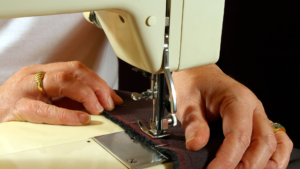
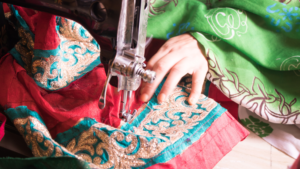
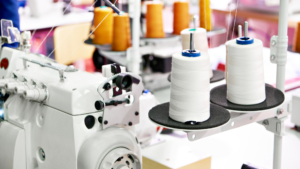
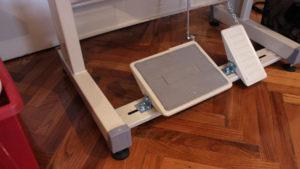
![Read more about the article Your Ultimate Guide On How To Use A Serger Sewing Machine [2023]](https://www.sewkitkit.com/wp-content/uploads/2021/09/serger-Y-300x169.png)